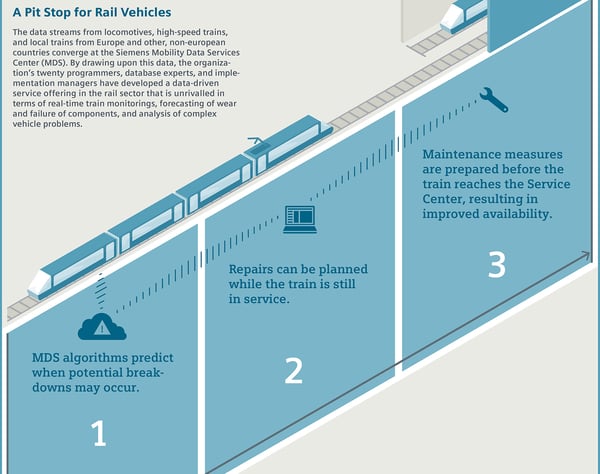Digital transformation and IoT implementation require a significant investment of time, capital and resources. According to an IDC report, global spending on IoT is expected to reach 1.3 trillion by 2020. In the near future, stakeholders will be required to justify the total cost of IoT. The list of benefits is growing; but, IoT is best known for its ability to provide data while the path to profit or ROI is unclear. This leaves many with the question: What can we do with data?
It’s impossible to ignore the fact that the ability to quickly use and present data derived from an IoT solution is critical to achieving any benefit. The best way to quickly benefit from IoT data is by streamlining development with an application enablement platform, or AEP. An AEP includes all of the components needed (device management, data visualization options, a rules engine, etc.) to build a scalable solution with little to no code. With an AEP, your development team can go from no data to data analysis in less time. When it is easy to digest data through graphs, reports or applications, it will be easy to make cost-saving decisions in response to it.
Here are some of the ways your organization can turn data into real business value.
Process optimization
Lean, efficient processes can preserve resources and reduce budgets. In virtually any industry, data can be collected from connected sensors to provide visibility into operations to eliminate waste. This translates directly to cost savings.

One clear example of this is in a smart building. Today, many companies are replacing cubicles with hot desks and open-concept environments. Sensors detect when a space is occupied so owners can optimize usage and reduce the cost of lights, heating, cooling and electronics. An AEP helps an enterprise easily integrate sensor data from multiple sources -which traditionally do not communicate- into graphs, real-time indoor maps, or gauges. Built-in visual workflows can help teams create alerts or automated email reports with no code to get to analysis and cost-saving decisions quickly.
Consider also the example of industrial equipment monitoring with IoT in a manufacturing environment. IoT technology provides enterprises with the ability to continuously monitor machine conditions and catch anomalies which could indicate an impending failure before it happens. Machine failure can domino into a costly blow on an enterprise budget. There is the initial cost of repair, possible replacement and unscheduled downtime and its impact on production. Monitoring conditions, or implementing a condition-based maintenance strategy in some cases, can save an organization roughly 50 percent of a traditional maintenance budget. The supervision protects investments and extends the life of machinery which also keeps costs down for customers.
Customer Insights
Enterprises are finding new creative ways to solve customer pain points and open new revenue streams by digging into data. In fact, user-generated data from IoT could lead product managers to their next big release.
For decades, enterprises have invested millions of dollars in focus groups and consumer feedback mechanisms to understand what the customer wants. By synchronizing integrated IoT systems with big data, enterprises could eliminate the need to wait for customers to share which features or services were most beneficial for them — the information would already be readily available.
The Harvard Business Review reported that when using data-driven decision making, “companies in the top third of their industry … were, on average, 5 percent more productive and 6 percent more profitable than their competitors.”
One obvious example of how data-driven decisions inspire new offerings is with Amazon, which has provided dash buttons, optimized shopping experiences and recommendations based on consumer data. In the B2B industry, manufacturers can capture data from the field, and increase production on the highest performing products and discontinue or improve those that are not performing.
Existing data can be collected, combined from disparate systems and analyzed with an IoT AEP and securely scaled from one to millions of devices without needing to develop software from scratch.

In the industrial sector, Siemens has worked to implement an intelligent maintenance offering or condition-based maintenance. By integrating connected sensors into its machinery and creating data centers using IoT, they can now anticipate maintenance based on real-time conditions. Other organizations are not far behind and using the technology to implement maintenance-as-a-service; provide alternatives to huge capital investments for machinery, improve customer relations and reduce stock levels for parts which can now be ordered as necessary instead of stored.
These are just a couple of ways that data from IoT can return revenue to enterprises. There is no cap on the value of data for your organization. However, the longer your business goes without instituting ways to collect data, the less information you’ll have to work from - moving the finish line of returned value further away.
The Losant Enterprise IoT Platform is an application enablement platform which comprises all of the components needed to streamline and expedite the development of any custom IoT application. If you’re interested in learning how IoT can help your team optimize operations, get customer insights or enhance innovation, meet with one of our solution engineers today.
